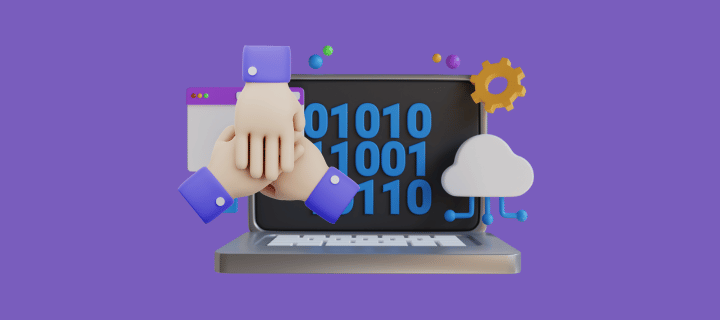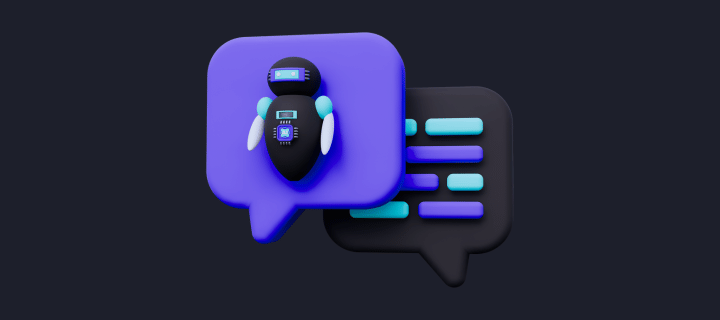
Harmonizing Code Review Workflow: A Remote Work Perspective
This article delves into the intricacies of remote code reviews, discussing the challenges and presenting solutions to create a harmonious workflow, with insights into tools like Pullflow.

Key Takeaways
- Asynchronous Isn’t always awesome: The flexibility of remote work comes with the challenge of asynchronous communication, which can slow down the code review process.
- Context switching is a buzzkill: Constantly switching between coding and code reviews can kill your productivity faster than you can say “merge conflict.”
- AI and automation are game changers: They can handle the repetitive tasks and even offer valuable insights, but they’re not a replacement for human expertise.
- Unified, conversation-driven workflows are the future: Bringing together humans, AI, and automation into one seamless conversation can make the code review process more efficient and enjoyable.
Alright, let’s cut to the chase. We’re all coding in our pajamas now, and while that’s awesome for work-life balance, it’s a bit of a dumpster fire for code reviews. Remember the good ol’ days when you could just roll your chair over to a colleague’s desk and say, “Hey, can you take a quick look at this function?” Yeah, those days are as gone as the headphone jack on an iPhone.
So, what’s the deal? We’re all remote, and that’s messing with our code review mojo. It’s like trying to play a co-op video game when your friend has a laggy internet connection—it’s frustrating and less fun. But hey, we’re engineers. We solve problems for a living, right? So let’s dive into this mess and see if we can clean it up a bit.
The good, the bad, and the ugly of remote code reviews
Asynchronous woes: The waiting game
Asynchronous communication is both the blessing and curse of remote work. On the one hand, it’s fantastic, but here’s the kicker: while you’re sipping your morning coffee, your teammate on the other side of the world is probably halfway into their REM sleep. So, you’re stuck playing the waiting game, hoping they’ll review your code before the deadline looms. It’s like waiting for a software update to complete—you know it’s necessary, but oh boy, is it tedious.
Context switching: The brain’s worst enemy
You’re deep in the code, in the zone, and then—BAM!—Slack notification. It’s a code review request. Normally, this would derail your focus, forcing you to switch gears and contexts. But what if that Slack notification was actually helpful? What if it allowed you to handle the review without leaving your coding environment?
Pullflow addresses the issue by offering bi-directional integration with your existing tools. It streamlines your workflow so that even a Slack notification becomes a seamless part of your coding process, rather than a disruptive element.
Tool overload: The Swiss Army nightmare
GitHub, Jira, Slack, Jenkins, and don’t even get me started on the bespoke internal tools that companies love to build that promise to “streamline your workflow.” But let’s be honest, it often feels like you’re a circus performer spinning plates. Each tool has its own set of notifications, quirks, and “must-use” features that you didn’t even ask for. It’s like owning a Swiss Army knife where you only use the blade but have to carry around a corkscrew, a toothpick, and a mini-screwdriver “just in case.”
AI and automation: The future or just a fad?
AI: The rubber duck that talks back
AI in code reviews is no longer just a glorified spell-checker. Think of it as a code consultant with a Ph.D. in computer science. Leveraging machine learning algorithms such as Decision Trees, it optimizes your code and even suggests algorithmic improvements. Using Natural Language Processing (NLP), it can analyze the tone of your comments. It’s like having an ever-vigilant code reviewer that also flags security risks in real time.
Automation: The CI/CD symphony
Continuous Integration and Continuous Deployment (CI/CD) are like the rhythm section of a band—often overlooked but crucial for keeping the tempo. Automated tests, builds, and deployments have become an integral part of modern code review workflows. When you submit a pull request, automated tests kick in like clockwork, providing immediate feedback on whether your changes are up to snuff. It’s like having a personal proofreader who checks your work before anyone else sees it. But remember, CI/CD is only as good as the tests you write. Garbage in, garbage out.
Chatbots: Digital interns we never knew we needed
Chatbots in the code review process are like interns who are always eager to help but don’t expect a paycheck. They can handle mundane tasks like updating ticket statuses, merging approved pull requests, and even notifying team members about pending reviews.
It’s like having an extra pair of hands that take care of the grunt work, allowing you to focus on more complex and creative tasks. But beware, chatbots are programmed to be literal-minded. A poorly configured bot can wreak havoc, like an intern who misunderstands “make me a coffee” and ends up ordering 100 espresso machines.
Tackling code review complexity with Pullflow
Let’s take a moment to discuss Pullflow, a tool that’s making waves in the developer community for its unique approach to code review challenges. Rather than being just another platform, Pullflow aims to be a solution to the specific issues we’ve been dissecting.
How Pullflow addresses the issues:
-
Context switching: Remember the mental toll of juggling between IDEs, chat apps, and code repositories? Pullflow integrates these platforms bi-directionally, reducing the need for constant tab-switching.
-
Asynchronous woes: A single thread for all PR activities keeps everyone updated in real-time, mitigating the delays caused by time-zone differences and asynchronous communication.
-
AI-Assisted Conversations: Pullflow’s contextual AI offers real-time answers and feedback in your Slack PR discussions, acting like an on-call code review guru.
-
Actionable commands: Allows immediate actions via Slack commands, reducing the need to switch contexts just to perform simple tasks like assigning a PR.

-
Performance metrics: Offers real-time metrics to help you track and improve review cycles and response times
Caveats to consider:
- Platform limitations: Currently, it only supports GitHub, Slack, and VS Code, which might be a constraint for some teams.
Pullflow brings together all your PR activities, automations, and conversations into one place. It’s like having a mission control center for your code reviews.
The dream: A unified, conversation-driven workflow
What we’re all yearning for is a unified, conversation-driven workflow for code reviews. Imagine a seamless integration of human expertise, AI insights, and automation, all working in harmony. Imagine a single thread where code, comments, and automated feedback coexist, allowing for real-time collaboration and decision-making.
The human element: the heart of code reviews
At the core of any code review process are the human reviewers. We bring to the table our experience, intuition, and creativity. We catch the nuances that AI might miss, understand the context in which the code will run, and offer insights that go beyond mere syntax and logic. We’re the jazz musicians who know when to stick to the sheet music and when to improvise.
AI and automation: The support cast
AI and automation are great, but they’re the support cast, not the lead actors. They should enhance the human element, not replace it. It’s like using a calculator to do math—you still need to know how to do the math; the calculator just makes it faster and more accurate.
The tools: Instruments of the trade
The tools we use—GitHub, Jira, CI/CD platforms, chatbots—are the instruments that produce the sound. They need to be finely tuned and well-maintained to produce a harmonious result. The choice of tools can make or break your code review process, so choose wisely.
Case study: from the trenches: Runn.io’s code review turnaround**
Here’s some food for thought. Runn.io faced the same code review bottlenecks many of us know all too well. After integrating Pullflow, their review wait times plummeted from a dragging 14 hours to a brisk 4. That’s less time waiting and more time coding, which is what we all want, right?

Conclusion: the future is what we make it, so let’s get to work
We’re at the crossroads of human ingenuity and tech innovation, with a keyboard in one hand and a pull request in the other. The future of code reviews isn’t about picking the perfect tool or methodology; it’s about creating a holistic approach that combines the best of human skill and cutting-edge tech.
Your Next Moves
- Audit your current workflow: Identify bottlenecks and areas ripe for improvement.
- Dabble in AI: If AI isn’t part of your toolkit yet, now’s the time to start experimenting.
- Optimize communication: Consider tools like Pullflow that centralize PR activities and reduce context switching.
- Invest in training: Make sure your team is up-to-date with the latest best practices in code reviews, whether it’s through internal training or external courses.
So let’s be the architects of a future where code reviews are not just a checkbox but a collaborative, enriching process that elevates both our code and ourselves. And if we can do that while sipping artisanal coffee and rocking our favorite band’s t-shirt, we’ve truly hit the jackpot.

